Update 16th November 2012
I would like to raise this question again, offering with a new bounty for a solid, good solution. It seems that only the solution (shubhansh's answer) does not effectively work now. I will explain why.
Firstly, this is the live map I have with radiuses and people, the radiuses are in red and the people are in blue.

As you can see, there are two people in this map with eight radiuses, basically I am getting only the person which is Person A, but I am not getting Person B, I'm guessing that the SQL is not correctly picking it up which I need it to be precise and accurate from the person's radius and the marker radiuses.
It looks like what is picked up are are inside the radiuses, not those who overlap a radius, I need it to be able to pick up any results for any radiuses that overlap each other.
I am looking for a precise and accurate SQL than shubhansh's answer. You may read below to read how exactly I need the query to act and pick up accurate people.
The data, PEOPLE:
+-----------+-----------+--------+
| latitude | longitude | radius |
+-----------+-----------+--------+
| 51.517395 | -0.053129 | 5.6 |
| 51.506607 | -0.116129 | 0.7 |
+-----------+-----------+--------+
Please note that radius is in kilometers.
+-----------+-----------+-----+
| latitude | longitude | km |
+-----------+-----------+-----+
| 51.502117 | -0.103340 | 0.3 |
| 51.498913 | -0.120850 | 0.7 |
| 51.496078 | -0.108919 | 0.7 |
| 51.496506 | -0.095873 | 0.7 |
| 51.503399 | -0.090723 | 0.7 |
| 51.508049 | -0.100336 | 0.7 |
| 51.508797 | -0.112610 | 0.7 |
| 51.505535 | -0.125227 | 0.7 |
| 51.502331 | -0.108061 | 0.7 |
+-----------+-----------+-----+
The current SQL I use:
SELECT ppl.latitude,
ppl.longitude,
ppl.radius
FROM
(
people ppl
),
(
SELECT latitude, longitude
FROM radiuses
) AS radius
WHERE (POW((ppl.longitude - radius.longitude) * 111.12 * COS(ppl.latitude), 2) + POW((ppl.longitude - radius.longitude) * 111.12, 2)) <= 4
GROUP BY ppl.id
The data for MySQL which you can use to test your query,
INSERT INTO radiuses (id, latitude, longitude, km) VALUES ('1', '51.502117', '-0.103340', '0.3'), ('2', '51.498913', '-0.120850', '0.7'), ('3', '51.496078', '-0.108919', '0.7'), ('4', '51.496506', '-0.095873', '0.7'), ('5', '51.503399', '-0.090723', '0.7'), ('6', '51.508049', '-0.100336', '0.7'), ('7', '51.508797', '-0.112610', '0.7'), ('8', '51.505535', '-0.125227', '0.7'), ('9', '51.502331', '-0.108061', '0.7');
INSERT INTO people (id, latitude, longitude, radius) VALUES ('1', '51.517395', '-0.053129', '5.6'), ('2', '51.506607', '-0.116129', '0.7');
Old summary
Note: all the latitudes and longitudes are just randomly made.
I have a map applet which a user can place his radius of a lat/lng location, with a 1km radius.
Now, there is another user that can put his radiuses, at any location on the map, each with 1km radius (same as the user above).
Like this User A is red and User B is blue.

Basically User A stores his radiuses in a table that looks like this:
+-----------+---------+-----------+-----------+
| radius_id | user_id | latitude | longitude |
+-----------+---------+-----------+-----------+
| 1 | 1 | 81.802117 | -1.110035 |
| 2 | 1 | 81.798272 | -1.144196 |
| 3 | 1 | 81.726782 | -1.135919 |
+-----------+---------+-----------+-----------+
And User B stores his radius in another table that looks like this - (note: they can only store 1 coordinates per account):
+---------+-----------+-----------+
| user_id | latitude | longitude |
+---------+-----------+-----------+
| 6 | 81.444126 | -1.244910 |
+---------+-----------+-----------+
I want to be able to pick up those users that fall within the defined radiuses, even if the radius circles are touching, in the map picture. Only marker C would be able to pick up the single radius, when A and B do not.
I'm sure this is possible, but I do not know how to come up with this kind of system in MySQL.
I found this on the Google Developers site it's close but not just what it performs I need.
EDIT: I have found a better one, this is very close, but still not what I am looking for, since it uses 1 bound of latitude and longitude coordinates when I have multiple in a table.